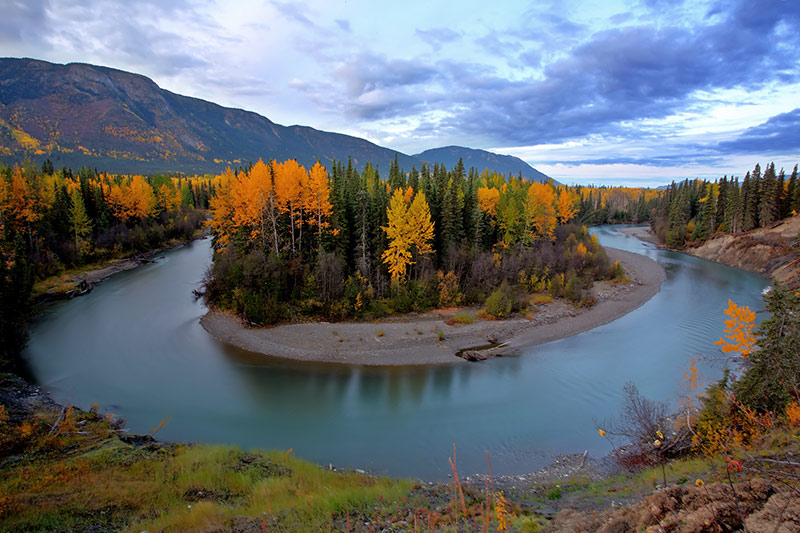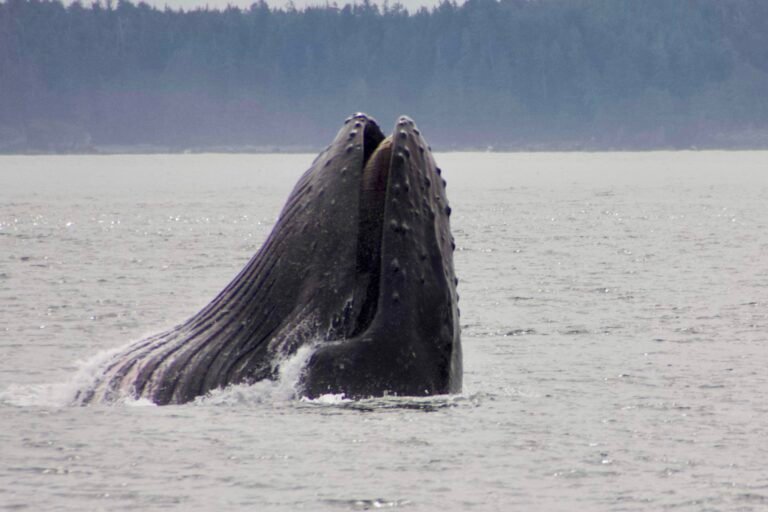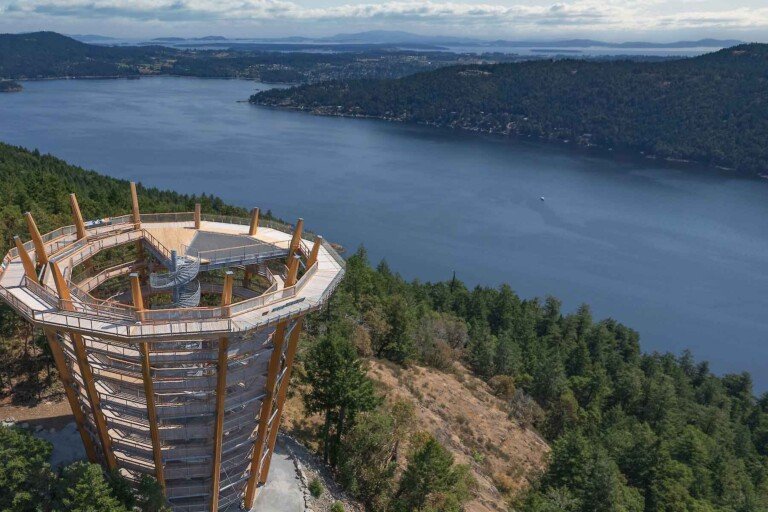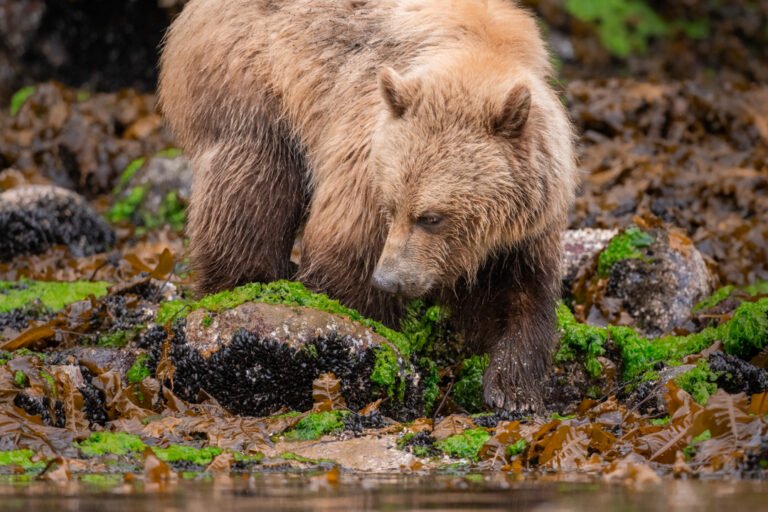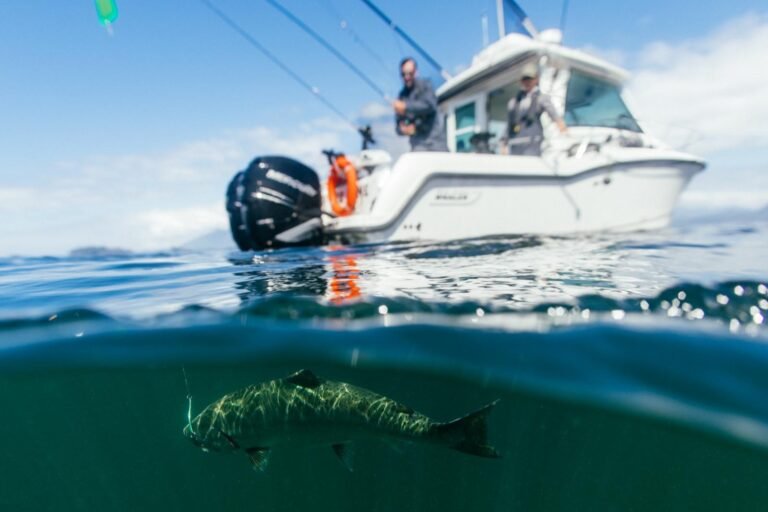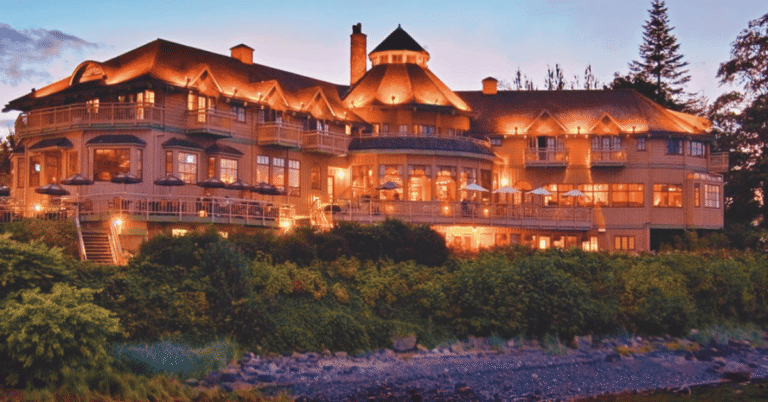The vast wilderness of Northern British Columbia and Haida Gwaii, formerly the Queen Charlotte Islands, are unspoiled masterpieces of nature. The Northern BC region includes Prince George, Fort Nelson, Fort St. John, the Alaska Highway, Vanderhoof, Fort St. James, Burns Lake, Terrace, Kitimat, the Bulkley Valley, the Skeena Valley, and the coastal port city of Prince Rupert. Across the Hecate Strait, Haida Gwaii comprises, Graham Island, Moresby Island and Langara Island, and the communities of Masset, Sandspit, and Skidegate.
Haida Gwaii (Queen Charlotte Islands)
Mythical and elusive, full of meaning and beauty, Haida Gwaii, formerly the Queen Charlotte Islands, offers arguably one of the most beautiful and diverse landscapes in the world. Made up of about 150 islands, Haida Gwaii is impossible not to marvel at, and to revel in.
- Alliford Bay
- Graham Island
- Haida Gwaii
- Juskatla
- Kano Inlet
- Langara Island
- Louise Island
- Masset
- Masset Inlet
- Moresby Camp
- Moresby Island
- Naden Harbour
- North Beach
- Old Masset
- Port Clements
- Port Louis
- Queen Charlotte City
- Queen Charlotte Islands
- Rennell Sound
- Sandspit
- Skidegate
- Tlell
North West British Columbia
Nestled up under the Alaska Panhandle, the North West is filled with both unique wilderness experiences and the standard British Columbia fare of deep fjords, dramatic canyons, sheer mountains, rivers thick with salmon, old-growth forests, and an abundance of wildlife.
- Atlin
- Bulkley & Skeena Valleys
- Burns Lake
- Dease Lake
- Fort Fraser
- Fort St. James
- Fraser Lake
- Fraser Plateau
- Granisle
- Hazelton
- Houston
- Inside Passage
- Iskut
- Jade City
- Kispiox
- Kitimat
- Kitwanga
- Lakes District
- Nass Valley
- New Hazelton
- Prince Rupert
- Smithers
- Stewart
- Stewart-Cassiar Hwy 37
- Stuart Nechako
- Telegraph Creek
- Telkwa
- Terrace
- Topley
- Vanderhoof
- Yellowhead Highway 16
North East British Columbia
The Rocky Mountains and their foothills dominate the Northeast, and the Northern Rocky Mountains are the largest roadless landscape south of the 60th parallel. The area’s wildlife population is so prolific that this portion of the Northern Rockies has been dubbed the Serengeti of North America.
- Alaska Highway 97
- Chetwynd
- Dawson Creek
- Fort Nelson
- Fort St. John
- Hudsons Hope
- Liard River
- Mackenzie
- Manson Creek
- McBride
- McLeod Lake
- Muncho Lake
- Omineca Peace Region
- Pink Mountain
- Pouce Coupe
- Prince George
- Taylor
- Toad River
- Tumbler Ridge
- Yellowhead Highway 16
Haida Gwaii (Queen Charlotte Islands)
They lie on the edge of the province’s collective memory like a dream scarce remembered; mythical and elusive, full of meaning and beauty, yet incomprehensible to the waking mind. Impossible not to marvel at, and revel in, these are the Queen Charlotte Islands, arguably one of the most beautiful and diverse landscapes in the world. Sometimes called Canada’s Galapagos, they form a distinctive ecosystem. The animals are familiar yet different. The black bears here, for instance, have a longer snout than elsewhere. They’re also bigger, flying in the face of the so-called island rule of evolution, that large animals get smaller when trapped on an island (a rule that was conceived, incidentally, by naturalist Bristol Foster while studying evolutionary patterns in the Queen Charlottes).
The Charlottes are about 100 km off the mainland, and are made up of about 150 islands. Two islands, Graham to the north and Morseby to the south, comprise the majority of the land mass. Most of Moresby is inaccessible by car except via logging road (a far, far too common feature of the Charlottes) or an alternative form of transportation, such as chartered boat, sea kayak, floatplane, or foot. Wildly undeveloped and unprotected, much of the land mass is open to resource-based exploitation.
The English name for these islands is prosaic, almost boring. Named for the wife of King George III, or rather, for the ship that was named for her, the name hardly serves to capture their elusive quality. The Haida name that the islands go by now is hardly better: Haida Gwaii, the place of the people. It’s a name that was given after the land was taken away from the Haida, and then part of it given back, grudgingly, after European diseases destroyed an entire culture and reduced the population of 30,000 Haida to a mere 600.
There is an older name for this place, a name that comes from the mists of time and seems to be the most appropriate name of all: Xhaaidlagha Gwaayaai, Islands at the Boundary of the World.
Northwest British Columbia
There are many things this area isn’t. It’s not home to a major city such as Vancouver or even Prince George; it’s not a hugely popular tourist destination such as the near-mythical Queen Charlottes or the cozy Okanagan Valley are; and it doesn’t contain vast tracts of uncharted wilderness such as the north does. Therefore, it’s easy to overlook or underappreciate what, on closer inspection, is an adventurer’s playground. Accessible by paved road, ferry, and plane, this region is filled with both unique wilderness experiences and the ‘standard’ British Columbia fare of deep fjords, dramatic canyons, sheer mountains, rivers thick with salmon, old-growth forests, and an abundance of wildlife.
Nestled up under the Alaska Panhandle, this is the province’s northernmost coast. It’s home to the Skeena, the second-largest river in British Columbia. Over five million salmon return to the Skeena every year, making this a premier salmon-fishing area. Prince Rupert, with its highway, rail, air, and ferry connections, serves as a gateway to pristine wilderness. Stop and stay awhile on your way through – there’s room to relax and to play in this region, so rich in Native and pioneer history. And since this area includes the world’s largest intact coastal rain forest, bring your rain gear, just in case!
Like most Canadian provinces, British Columbia is bottom-heavy, with much of its population tucked away into its southwest corner. Vanderhoof, about 60 miles (100 km) west of Prince George on Highway 16, is the geographic centre of British Columbia, and yet is considered to be well ensconced in the northern half of the province. But then, for many people in the Lower Mainland, anything north of Whistler is the far north.
This is land steeped in history. Alexander Mackenzie walked this way in 1793, becoming the first European to cross North America by land. The Alexander Mackenzie Historical Trail weaves its way through the vast wilderness between Highways 16 and 20 to the south, and is one of the longest hiking trails in the province. Fort St. James, north of Vanderhoof, is one of the oldest white settlements in British Columbia. Every campground you visit, every trail you walk, every canoe route you travel likely has some history attached to it, from prehistoric fossils at Driftwood Canyon Provincial Park to century-old Native grease trails, to turn-of-the-century gold-rush and telegraph trails.
In the past, people had to walk, ride horses, or take canoes. Now, Highway 16 runs west from Prince George, carrying you through the north end of the Interior Plateau, a land rife with lakes of all sizes. Is it any wonder that this is fishing country, and that water sports are one of the most popular forms of summer recreation? The popular Stewart Alaska Highway provides another link by road to Alaska and Yukon, and connects with the British Columbia Ferries and Alaska Marine Highway system on the coast. Stretching 900km north from the Douglas Channel in Kitimat to the Alaska Highway in the Yukon, the Stewart Alaska route is slightly shorter and features an impressive range of sightseeing opportunities. Driving through the region allows visitors to enjoy wilderness while recapturing the essence of the past, for First Nations heritage and the pioneering spirit permeate the landscape.
This is also a land of long, cold winters and short, hot summers. In winter, the temperature can drop to below -22 deg F/-30 deg C for weeks on end. In the summer, clouds of insects, most of them out for blood, swarm about in early evening. If you are planning on travelling in this area, know your enemies and come prepared.
Northeast British Columbia
When people think of the Rocky Mountains, they usually think of Banff and Jasper National Parks on the Alberta side of the British Columbia-Alberta border. It doesn’t register that a major portion of these mountains spill across the Alberta border, cutting a vast swath across the northern half of British Columbia. The Rocky Mountains and their foothills dominate the Northeast, comprising roughly 20 million acres (8 million hectares). There are no roads that cross the range north of Pine Pass (between Mackenzie and Chetwynd) until the Yukon border. The Northern Rocky Mountains are the largest roadless landscape south of the 60th parallel, as well as one of the richest and most varied intact large wildlife ecosystems remaining in North America. The area’s wildlife population is so prolific that this portion of the Northern Rockies has been dubbed the Serengeti of North America.
In the vast, highwayless gulf between the Alaska Highway, which begins in Dawson Creek at Mile 0, and Hwy 37 to the west is an area that at its most expansive is 700 km wide and 1,200 km long. To put that in perspective, you could drop Switzerland into this region and not have road access. This is big country. Most people don’t venture more than a few miles off paved road. Some never make it off pavement at all, but if you do, a world of recreational opportunities awaits, whether you’re a weekend adventurer or a trail-hardened backpacker. People who go out unprepared into this wilderness, however, don’t come back. Ignorance and arrogance in the face of nature are the surest ways of getting yourself killed. Come prepared, and enjoy the rich and varied wilderness, a place where people are scarce, but the exploits plentiful.
The northeast region of the province has been a focus of petroleum exploration and development since 1952. Approximately 2,400 oil and gas pools have been identified in this region and about 8,670 wells were drilled to the end of 1996. At December 31, 1995, 544 billion cubic metres of natural gas have been established as initial marketable reserves, and up to 4,400 billion remain to be discovered. As of the same time there are up to 48 million cubic metres of potential recoverable oil in addition to the estimated 103 million cubic metres of initial established reserves. Further investment area is in the areas of seismic, pipeline, drilling, processing plants and exploration.
Over 95% of electricity production in energyrich British Columbia comes from hydro electricity sources. The Peace River area currently supplies 38% of this total. Development of the Peace River for hydro-electric power began some 30 years ago with W.A.C. Bennet Dam. The 600 foot (183 m) monstrosity is a wonder of modern engineering, a half-mile wide at its base; when the floodgates are opened in early spring, the gushing water is truly an impressive sight. The dam’s reservoir, Williston Lake, controls flow of the Peace River. Its G.M. Shrum Generating Station has a continuous capacity of 2,730 megawatts. Downstream, Peace Canyon Dam generates 700 megawatts using water that has already generated power at G.M. Shrum.
Alaska Highway: The famed Alaska Highway, long considered an epic in road building, has come a long way since it was completed in just over eight grueling months back in 1942. Started as a wartime measure designed to provide a land route for war material and equipment to Alaska from the Canadian provinces and American States, the Alaska Highway was punched through more than 1,500 miles of mountains, muskeg and mosquitoes.
The highway began in the small town of Dawson Creek, then populated by approximately 600 people. On March 9, 1942 the first train carrying troops arrived at the town. In a matter of weeks the town’s population boomed to over 10,000.
More than 11,000 American troops (including seven regiments of engineers, three of them with men of African American heritage), 16,000 civilian workmen and 7,000 pieces of equipment were thrown into the herculean task of penetrating a vast untamed wilderness.
The construction bill for the 1,523 mile route was about $140 million and it included 133 major bridges and more than 8,000 culverts which, if placed end to end, would stretch over 57 miles.
Then on a bleak, cold November 20, 1942, a little less than nine months after the construction began, 250 shivering soldiers, civilians and Royal Canadian Mounted Policemen watched as officials from the United States and Canada cut the ribbon to officially open this major road link. The ceremony took place at Mile 1061, known as “Soldiers Summit” and it crowned an event that has gone down in history as one of the construction triumphs of the world.
Since then, the Alaska Highway has developed into one of the most important transportation arteries in North America, stretching from Mile ‘O’ at Dawson Creek, British Columbia through the Yukon Territory and into Alaska. Jurisdiction of the Canadian section of the highway was turned over to the Canadian Army in 1946 and all reconstruction and upgrading was carried out under Canadian Army supervision until April 1, 1964 when the Federal Department of Public Works took it over. On April 1, 1971 the maintenance of the Yukon section of the Alaska Highway was turned over to the Yukon Department of Highways and Public Works by the Federal Government.
Ever since the Alaska Highway was completed in the 1940’s, a continual program of upgrading, widening and straightening has been underway. Approximately 90% of the Alaska Highway is now paved. The Alaska Highway, once an energy wartime road, has developed into a vital link between the giant industrial regions of the U.S. and Canada and the natural resources of the Alaska and Yukon. But, aside from the economic aspects of the highway, it also represents a permanent monument to the durable and warm friendship between two great nations. On September 28th, 1996 in a ceremony at Dawson Creek, the Alaska Highway was designated as the 16th International Historic Civil Engineering Landmark.

